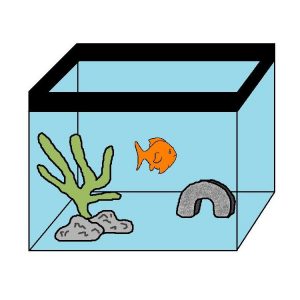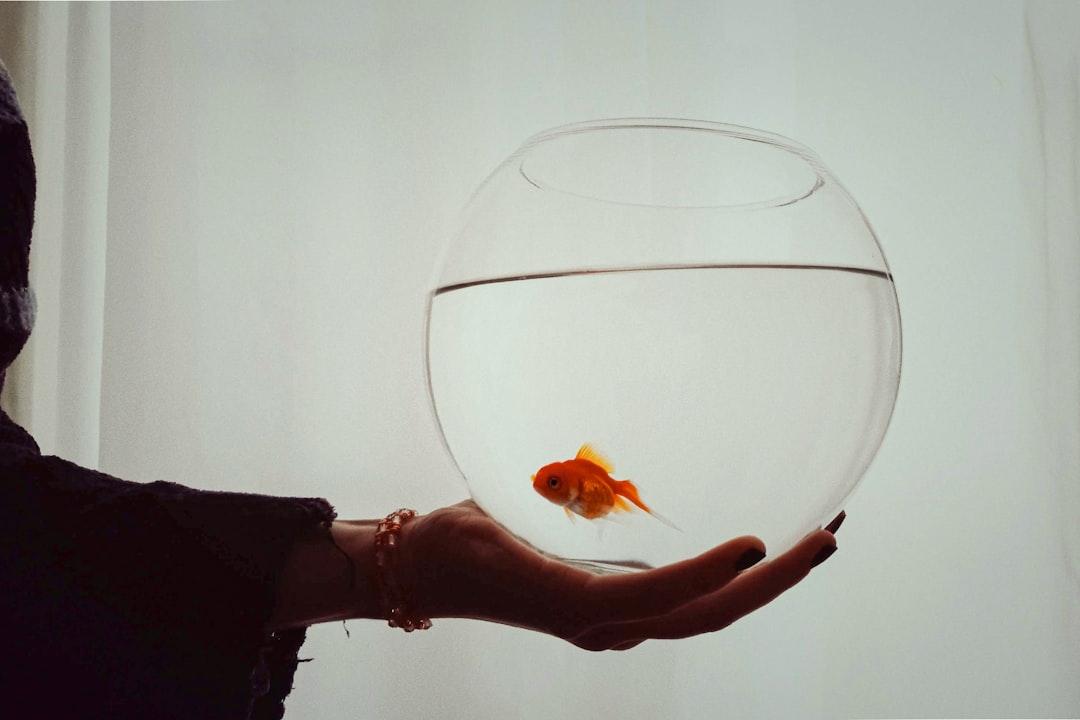If you’re moving house – or you’re thinking of moving goldfish for any other reason – you might be quite concerned about how it will go.
Don’t worry.
Follow these simple steps and your goldfish should be absolutely fine.
Preparing the tank

Never attempt to move a tank while it’s full of water and fish.
In addition to being extremely heavy, glass tanks are not designed to be moved whilst full. The sides of the tank will move with the shifting pressure of the water inside it, causing the sealant to split and the tank to collapse.
You therefore need to empty your tank before moving goldfish anywhere.
How to empty a goldfish tank ready for moving
First, remove any live plants and put them in sealed plastic bags along with a little tank water.
Then take the tank’s filter media and place it in a plastic bag, keeping it immersed in tank water. This will preserve the colonies of good bacteria that live inside it. This is important, as preserving the original filter media means you won’t need to restart the cycling process all over again.
Next, ornaments should be cleaned, wrapped in newspaper or bubble-wrap, and placed in a sturdy box. Gravel can be left ‘dirty’ and placed in plastic bags.
Only now is it time to remove your fish. Use a net to remove your goldfish and place them in plastic bags (available from your local aquarium supply shop) with some water from the tank. Fill the bags about half-full, leaving a large air pocket inside the top part of the bag to provide the fish with oxygen. Double-bag just in case of leaks, and seal each bag with elastic bands.
Finally, siphon all the remaining water from the tank.
Packing the tank
Wrap the tank in bubble-wrap – paying particular attention to protecting the corners. Secure the bubble-wrap with parcel tape so that it doesn’t slip when picked up.
Then wrap the tank in a furniture blanket secured in place with more tape.
Put the tank into a sturdy box.
If someone will be moving boxes for you, label the box ‘Fragile’ and use arrows to indicate which way up the box should be carried.
Moving your goldfish
Don’t feed your fish for 24 hours before they are moved. This will help to reduce the amount of harmful nitrate waste in the fish’s transport container. (Don’t worry – your goldfish can easily survive without food for this long!)
Pack the bags of fish in a polystyrene travel box. Place the bags vertically so that they support each other and won’t fall over in transit. It’s important to use a polystyrene box to insulate the fish and keep the water temperature stable.
And you’re good to go! Follow all of these steps and your goldfish should arrive at their new home unscathed and with minimal stress.



How long can they stay in the bag for transport? I’m traveling almost 700 miles. I would really like to keep my fish but I don’t want them to be so stressed they die.
Hi Jamie, thanks for your comment,
Typically fish can last around 2-3 hours in the bags, sometimes longer, you can however, ask to have the bags to be filled with oxygen which can add an extra few hours, and add a heat pack to keep the temperature up for tropicals.
You could also bring or ask the place you get the fish from for a polystyrene box, this will reduce stress and maintain the temperature in the bags better.
Hope this helps.